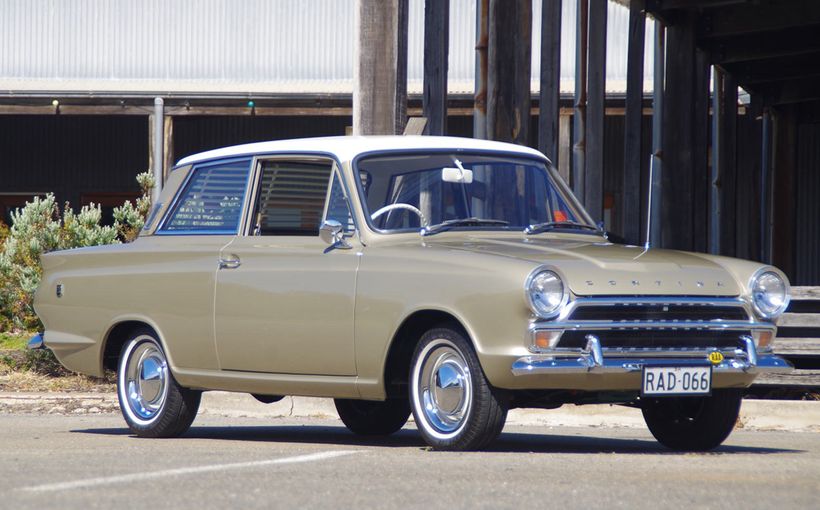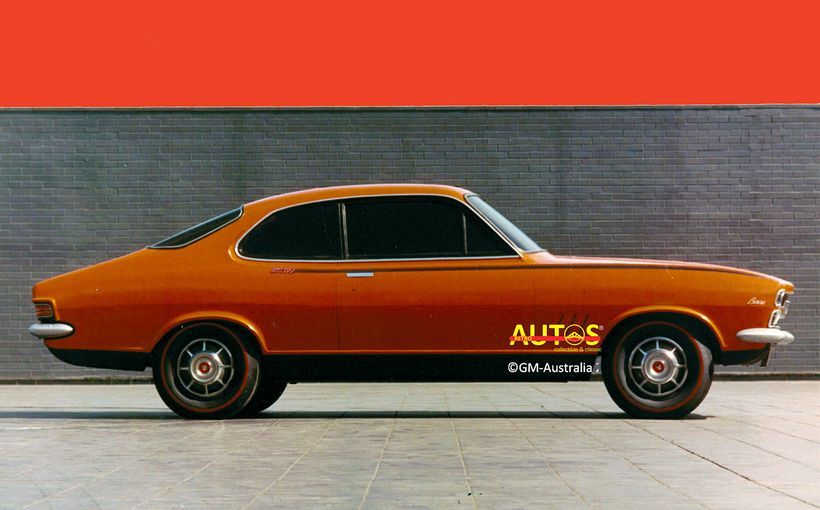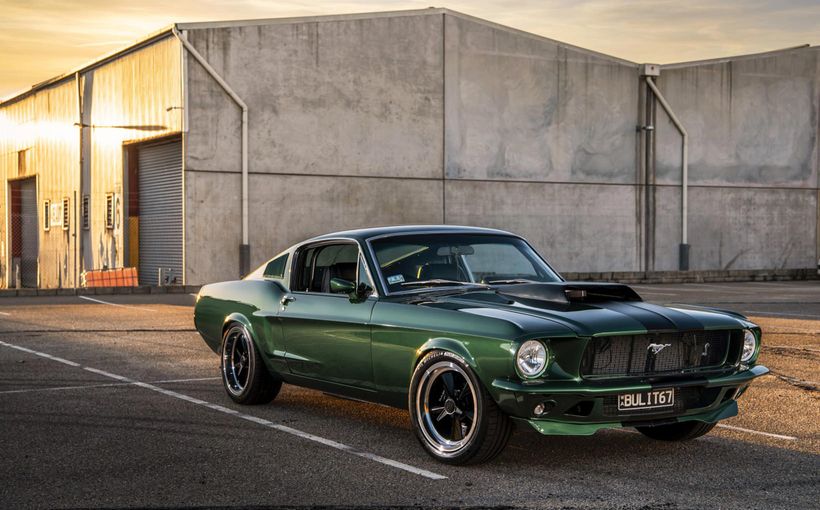Mercury’s Comet: Stellar Success was Almost an Edsel

In mid-1959 Ford in the USA realised it had a problem related to a new “compact” car it had ready for release. The high hopes the company had for its Edsel brand, released amid much media hype on 4th September 1957, had evaporated as quickly as the sales. A decision was made to terminate Edsel production and announced on 19th November 1959.

So, what was the problem? Well, waiting to be released was a small Edsel, based on the newly unveiled Falcon. The problem was what to do with it? The answer lay in the car’s development history.
Since the early 1950s, Ford’s market research and product planning departments had been sounding a warning about the steady rise of small car imports. The research showed a growing group of Americans were buying smaller imported cars, particularly the VW Beetle. The main reasons these buyers gave were that they wanted a less expensive car, were buying their first new car, could not afford a full-sized vehicle or were affluent families who desired a smaller second car.


These warnings were put aside because of surging sales of full-sized Fords at full-sized prices. What Ford’s top managers believed was needed, and research data also pointed to this, was another full-sized car range to sit just below its other mid-market brand, Mercury. They saw no need for a small, low profit car taking up time and money to develop. Work then started on what would become the Edsel.
In 1955, two of Ford’s top executives at the time, Lewis Crusoe, boss of the car and truck division, and Robert McNamara, his second in command, revisited the small car research data. That year imports found 57,000 willing buyers, of which 33,000 were VWs. Crusoe could see a trend emerging. He directed the Lincoln-Mercury design studio to begin styling a small car. It was given the project name “L’Avion”. It was not intended to be a cheap car. It would be priced to align with Mercury’s mid-level market position.
The styling was finalised in early 1957.


While the L’Avion concept was in development Lewis suffered a heart attack and decided to retire. McNamara took over his role and changed the direction of the project. He believed this small car should be easy to build, easy to repair, priced low, compact, functional, roomy and economic to operate. The new program, coded XK Thunderbird was instigated, with styling proposals beginning in November 1957. It was just in time, too. At the end of 1957 imports accounted for 259,000 sales and would climb to 433,000 in 1958, almost 10% of the US market. Plus, American Motors sold 147,000 of its compact Rebel and smaller American models in 1958.
The work on the L’Avion was not wasted. Its design themes informed the shape of the 1959 Anglia and 1961 Consul Classic. Its cantilever fins were used across the Ford company range, including Lincoln.
Meanwhile, the Edsel had been released to an underwhelming response. Both Lincoln and Mercury were not setting sales records either, with their overly garish 1958 models. To attempt to fix these issues Mercury, Edsel and Lincoln divisions (M-E-L) were amalgamated in early 1958 and top-level management changes implemented.


Amid all of the uncertainty, change and falling sales M-E-L dealers began to get a little nervous about their future. When they heard about the XK T-Bird they started agitating for ”their” version as a way out of the gloomy sales numbers. The plans for the small Mercury were resurrected and this time it was decided to offer it as an Edsel, coded Edsel B, to bolster that brand’s sales and image. Time and cost constraints dictated it be based on the XK T-Bird, soon to be renamed Falcon.
Early proposals were quite Falcon-like. A four door pillarless hardtop was seriously considered, but costs eliminated that idea. Late in the development program it was given a Thunderbird roof line (which the Falcon would get in 1962-63) and this really set the Edsel B apart from its cheaper sibling.


To give the Falcon time to establish itself, the Edsel B’s release was scheduled for the northern spring of 1960. And that takes us to November 1959 when the Edsel range was withdrawn from the US market. The Edsel B was quickly re-purposed as the Comet and given to Mercury dealers to sell as a standalone brand.
Released on 17th March 1960, everyone called it the Mercury Comet from day one. Ford maintained the charade that was not a Mercury until 1962 when they quietly gave in to public opinion. The industry called it a senior compact.

So, how did it sell? By any measure it was a success. In the first year 116,000 were bought, putting it fourth behind the Falcon (436,000), Chevrolet Corvair (250,000) and Valiant (197,000) in the compact segment. In 1961 the Comet went to almost 200,000 buyers. Combined sales for 1962 and 1963 were 300,000. All up, that’s 600,000 cars in the first three years and the Comet accounted for almost 50% of Mercury’s sales during that time. By comparison, 1.4 million Falcons were sold between 1960 to 1963.

It is not hard to see why the Comet was an attractive proposition. Priced just $US79 (4%) above the basic Falcon the extra outlay gave buyers plenty to be pleased about. For starters, the sedan had a 114 inch/2896mm wheelbase, a 4.5 inch/114mm extension over the Falcon. All of that extra length went into the rear seat legroom and boot capacity. The wagon stayed with the 109.5 inch/2781mm Falcon wheelbase.

Dual headlights, a flashy dashboard, “gunsights” fixed to the tops of the front fenders and higher-quality upholstery added to the value for money deal. The very distinctive “Thunderbird” roof line, more substantial front fenders, an intricate grille and cantilever rear fins (a Ford design signature) with oval taillights cleverly hid the Comet’s humble Falcon origins.
To put the 1960 Comet into a local perspective, in terms of inclusions it was approximately the equivalent of our 1962 Falcon Futura, without the bucket seats but with Fairlane-size legroom for the rear seat passengers.

The value for money theme was heavily promoted and Mercury dealers were given comprehensive comparison charts and price guides which highlighted the Comet’s advantages over the Chevrolet Corvair, AMC Rambler, Studebaker Lark, Plymouth Valiant and Falcon.
What was conveniently omitted on the comparison chart was that the Comet shared the Falcon’s 144 cubic inch/2.4 litre six-cylinder engine. Those 90 bhp/67kw had to haul around a 160lb/73kg heavier body. A three-speed manual was standard with Ford’s two speed automatic optional.






When it was released, the Comet had no equivalents. But that soon changed. GM’s Buick, Oldsmobile and Pontiac followed in 1961 with their own senior compacts, all on a 112 inch/2845mm wheelbase. They had been developed because Buick, Oldsmobile and Pontiac divisions and dealers had rejected the Corvair, demanding something more befitting their mid to upper end market status. (please see my November 2021 Retroautos feature about the rejection of the Corvair by the general managers of Pontiac, Oldsmobile and Buick at the link at the end of this story). In 1962 Studebaker joined the party when it stretched its re-styled Lark over a 113 inch/2807mm wheelbase, up from 108 inches/4572mm. AMC debuted its Rambler Classic in 1963, draped over a 112 inch/2845mm frame.


For the model years 1961 to 1963 the Comet underwent the obligatory minor sheet metal changes front and rear. The fins were reduced in size. Ford’s 170 cubic inch/2.8 litre six was added in 1961. In 1963 the two-door hardtop and convertible bodies, again Falcon based, became available. Ford’s 260 cubic inch/4.3 litre V8 engine was a new option.
The success of the senior compacts predicted the buyer appetite for an “intermediate” sized car. Ford was first into this expanding area with the 1962 Fairlane and the Mercury Meteor. The Meteor was really a Fairlane with a slightly different grille, fenders, lights, chrome trim and interior. Most of these differences detracted from the car’s appearance.

The intermediates presented Mercury with a new problem. The Fairlane sat on a 115.5-inch/2934mm wheelbase. The Meteor came with a 116.5 inch/2959m distance between the wheels, but offered no additional interior room. You can see where all this is heading. The Comet was cheaper than the Meteor, looked much the same and had almost the same dimensions. The less expensive Fairlane had the same interior space and looked better. The obvious question was “why buy a Meteor?”
A rather disingenuous print advertisement attempted the answer. Using the old photographic trick of forced perspective, the Comet was depicted as much smaller than the Meteor and full-sized Monterey. But on dealership showroom floors buyers were not fooled. Only 120,000 Meteors were sold in 1962 and 1963. The Comet, on the other hand, went to almost three times that number of customers in those years.


Recognising that it was never going to be a sales success, Mercury’s managers did not persist with the Meteor beyond the end of 1963. To take its place, the Comet was upsized in length and width but not wheelbase. The rear fins were beaten down almost flat and, for 1965, stacked headlights gave it a remarkable Pontiac-esque appearance.

The makeover was timely because 1964 saw the arrival of GM’s new intermediate range—Chevrolet Chevelle, Pontiac Tempest, Buick Skylark and Oldsmobile Cutlass. Some car magazines called the revised Comet a large senior compact. Others reckoned it was as a small intermediate. Whatever the label, an impressive 355,000 were sold in 1964 and 1965. By comparison, 500,000 Fairlanes exited dealerships during those two years, so not a shabby effort from the Comet. In 1966 the Comet was upsized and shared its body and dimensions with the new Ford Fairlane.

I believe the importance of the Falcon-based Comet has five aspects.
First, its stellar sales achievement kept Mercury viable in first half of 1960s. Around 50% of Mercury’s sales were Comets. Without it, Mercury may well have gone the way of the Edsel. Second, it revealed the sales potential for intermediate sized cars in the USA, which Ford exploited for four years ahead of GM, selling over 1.2 million Comets, Meteors and Fairlanes. Third, it was the first in a long line of Ford cars to be underpinned by the Falcon’s mechanicals and frame. Fourth, it makes me wonder if the Comet could have stood alone as an Edsel? Perhaps. It had no Mercury badging for two years and in that time bested Edsel’s entire production total three times over. Fifth, the front end of the 1965 XP Falcon was taken from the 1960-61 Comet.


Secret Pontiac and Oldsmobile Corvair clones you never saw. Retroautos is written and published with passion and with pride by David Burrell. Retroautos stories and images are copyrighted. Reproducing them in any format is prohibited. Retroautos is a registered trademark.









